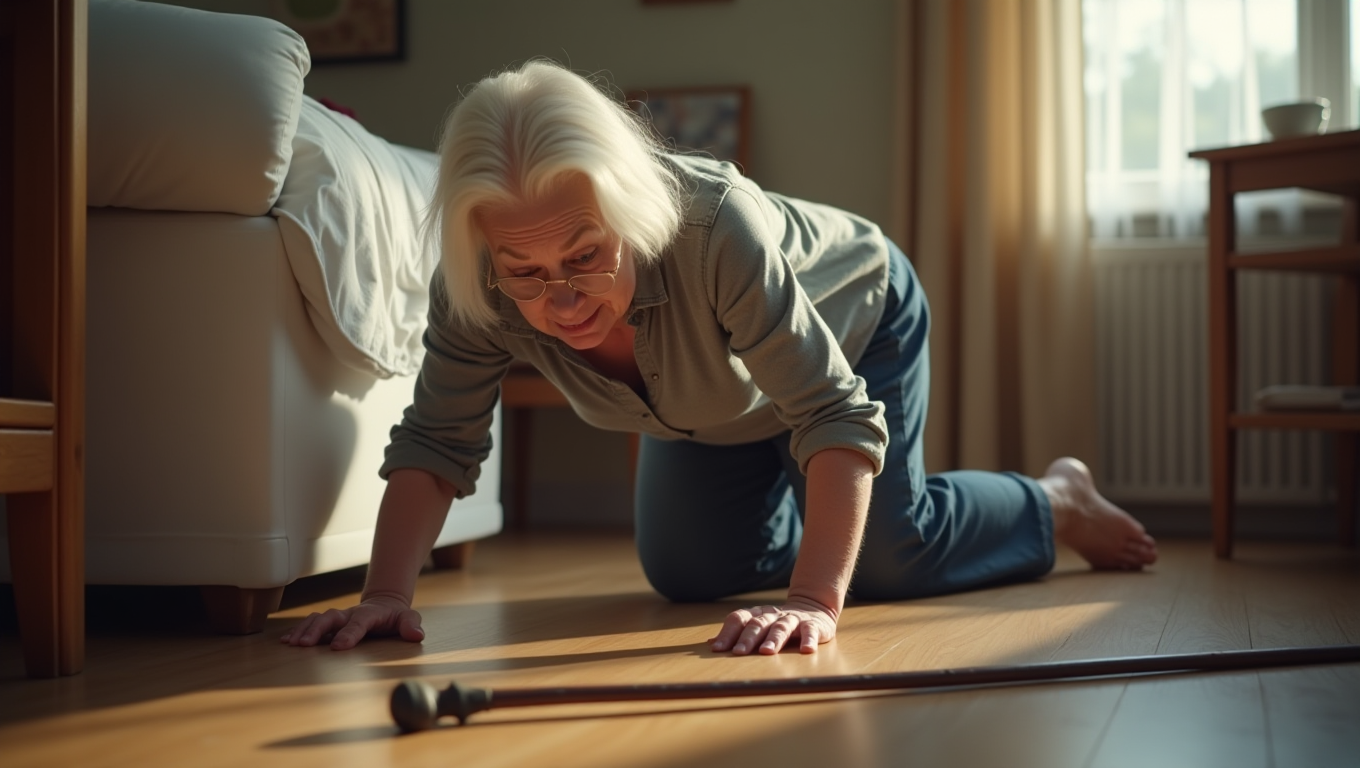Falls are one of the most common concerns for seniors, often leading to injuries, loss of independence, and anxiety about mobility. Fortunately, Artificial Intelligence (AI) is transforming how we prevent and manage falls, offering innovative solutions that promote safety and confidence for seniors.
Here are 12 ways AI can help seniors stay safe, reduce fall risks, and ensure timely assistance if a fall occurs:
1. Fall Detection Devices
AI-powered wearables, such as smartwatches and pendants, can detect sudden movements or impacts associated with a fall. These devices automatically alert caregivers or emergency services, ensuring swift response when needed.
- Example: Apple Watch and Medical Guardian devices use built-in fall detection features.
2. Predicting Fall Risks
AI analyzes patterns in walking speed, balance, and body posture using motion sensors. By identifying subtle changes in mobility, these systems can alert seniors and caregivers to potential risks before a fall occurs.
- Example: Wearables like Fitbit Sense or iHealth devices track activity patterns and identify mobility concerns.
3. Smart Flooring
AI-integrated flooring systems detect unusual pressure changes, such as those caused by a fall, and immediately send alerts to caregivers or emergency contacts.
- Example: SensFloor uses pressure sensors to monitor movement and detect falls in real time.
4. Real-Time Gait Analysis
AI systems in smart insoles or fitness trackers analyze gait in real time, identifying imbalances or irregularities that may increase fall risks. Early detection allows seniors to address issues with exercises or physical therapy.
- Example: Smart insoles like RunScribe or Moticon provide gait analysis to detect anomalies.
5. AI-Powered Cameras
Non-invasive AI cameras monitor a senior’s movement at home, identifying patterns and flagging unusual behaviors, like sudden inactivity that could indicate a fall.
- Example: CarePredict Tempo uses AI-driven cameras and sensors to monitor seniors’ activities and provide alerts.
6. Virtual Physical Therapy
AI-powered virtual physical therapy programs assess seniors’ movements during exercises and suggest adjustments to improve balance and strength, reducing fall risks over time.
- Example: Apps like Kaia Health provide AI-guided exercise routines tailored to seniors’ needs.
7. Smart Walking Aids
AI-enhanced walking aids, such as smart canes or walkers, provide stability and guidance. They also monitor the user’s movement and alert them if they’re leaning too far or losing balance.
- Example: The iWalk Active Cane integrates AI to improve stability and provide feedback.
8. Medication Monitoring
Some falls are caused by dizziness or side effects from medications. AI-powered medication reminders ensure seniors take the correct dosages and avoid missed or double doses that could lead to instability.
- Example: The Hero Medication Dispenser ensures timely medication management.
9. Smart Lighting
AI-connected lighting systems illuminate paths automatically when motion is detected, reducing the risk of tripping or falling in poorly lit areas.
- Example: Philips Hue Motion Sensor Lights activate automatically to brighten dark hallways or bathrooms.
10. Voice Assistants for Emergency Assistance
AI-powered voice assistants like Alexa or Google Home can be programmed to call for help when seniors experience a fall and cannot reach a phone.
- Example: Setting up commands like, “Alexa, call for help,” provides immediate assistance.
11. Wearable Airbags
AI-driven wearable airbags deploy instantly if a fall is detected, reducing the impact and preventing injuries like hip fractures.
- Example: Devices like Hip’Air by Helite provide protection by cushioning falls.
12. Predictive Analytics for Caregivers
AI analyzes data from various devices, creating reports on a senior’s mobility, balance, and activity levels. This helps caregivers predict and prevent falls by addressing potential risks through targeted interventions.
- Example: CarePredict provides comprehensive reports for caregivers, enabling proactive care.
Tips for Seniors to Use AI for Fall Prevention
- Start with One Device: Begin with a simple wearable like a smartwatch with fall detection.
- Customize Alerts: Set up notifications to alert trusted contacts or family members in case of emergencies.
- Stay Consistent: Use devices regularly to allow AI systems to build accurate activity patterns and provide meaningful insights.
- Combine with Physical Activity: Use AI-guided exercises to improve strength and balance.
- Consult Experts: Work with healthcare providers to select the most suitable AI tools for your needs.
Conclusion
AI offers a range of innovative solutions to help seniors prevent and manage falls, promoting independence, safety, and peace of mind. Whether it’s wearable technology, smart lighting, or predictive analytics, these tools are designed to integrate seamlessly into daily life.
At CoolSenior, we’re here to guide you through choosing and using the best AI-powered tools for your needs. Visit our Health and Wellness section to explore products, tips, and success stories from seniors who have embraced AI to stay safe and confident at home. Let’s take the next step together in building a safer, more empowered life with AI!


No responses yet